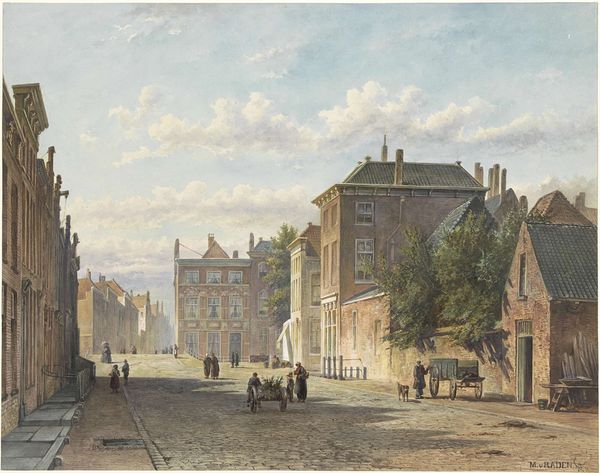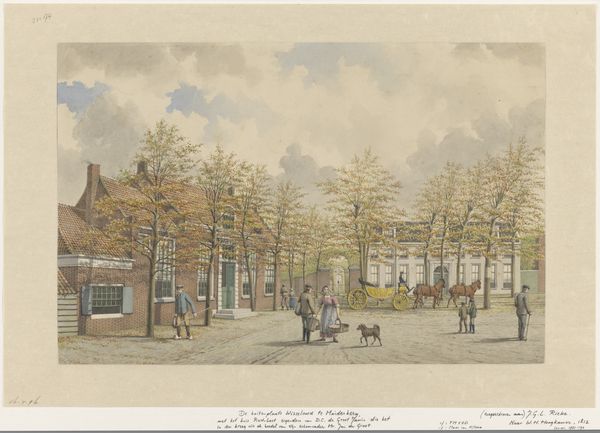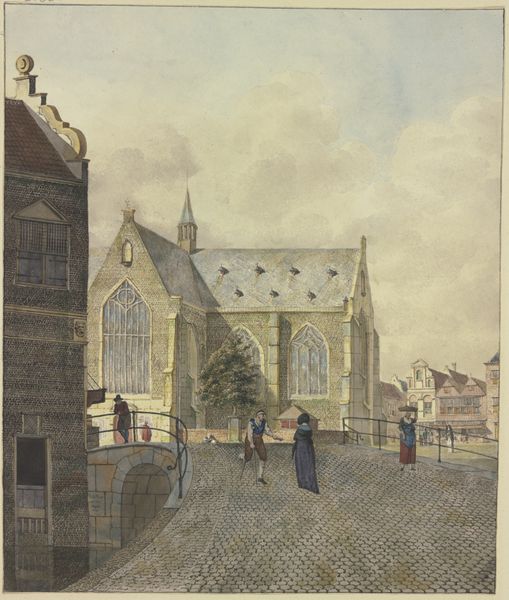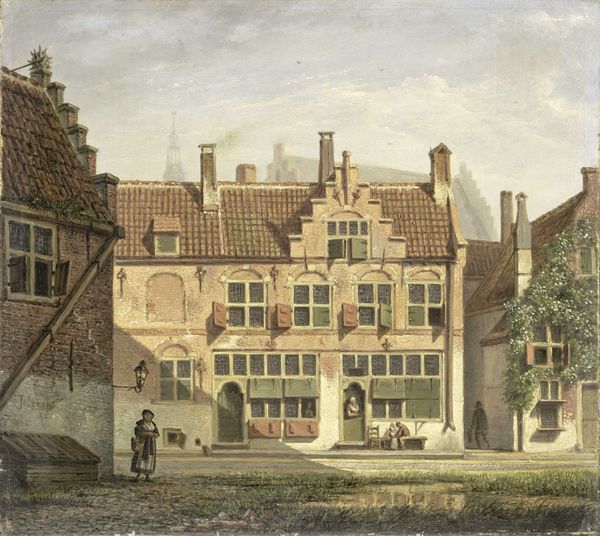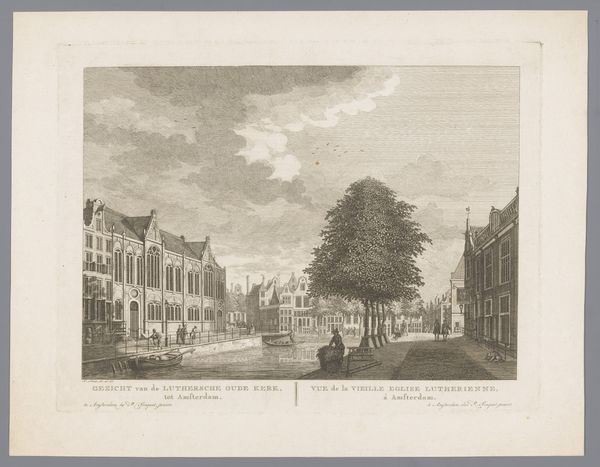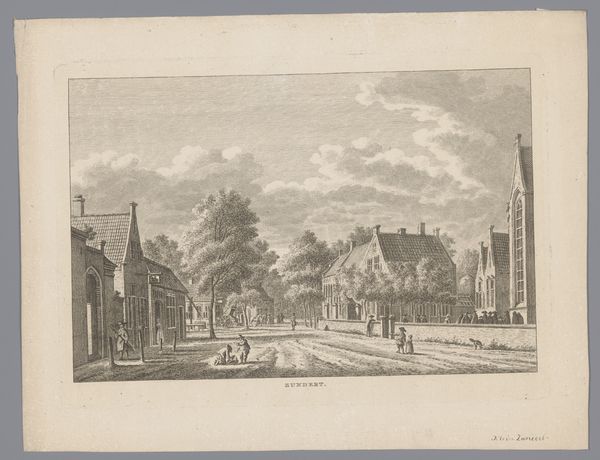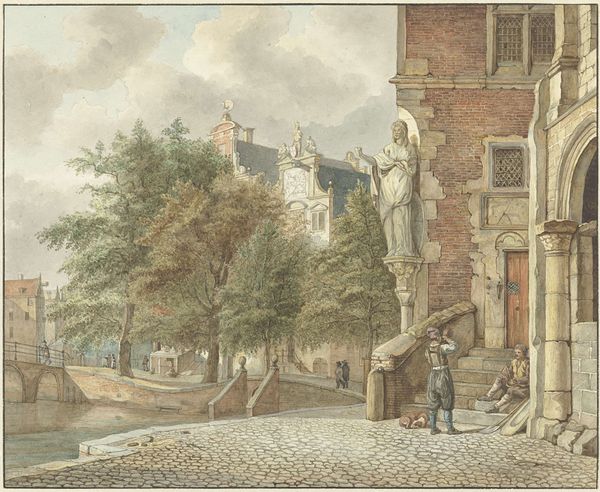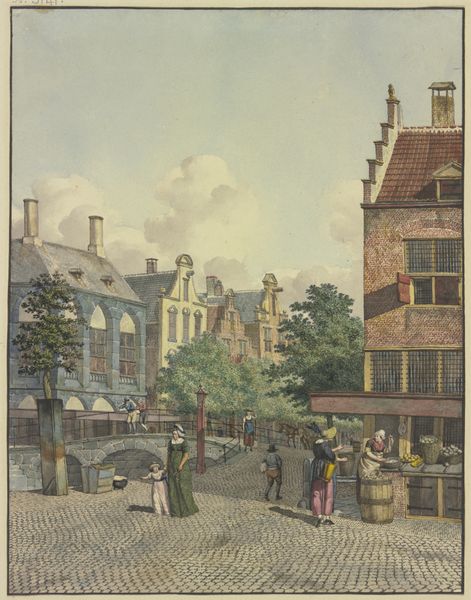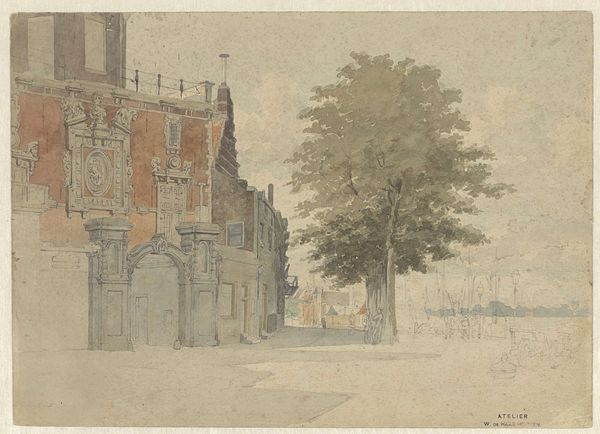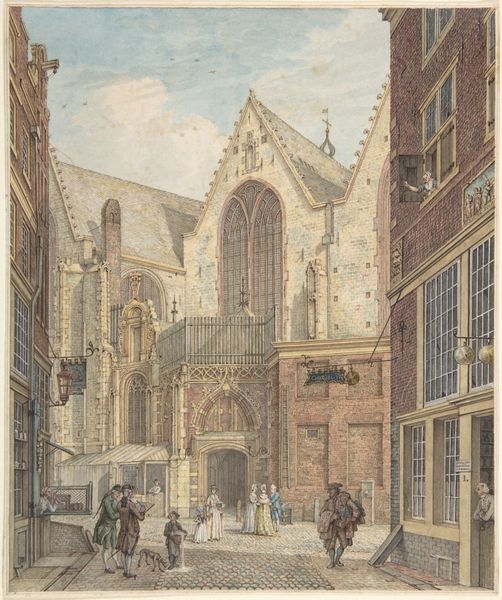
drawing, print, gouache, plein-air, paper, watercolor, graphite
#
drawing
#
water colours
# print
#
gouache
#
plein-air
#
landscape
#
paper
#
watercolor
#
coloured pencil
#
england
#
romanticism
#
water
#
graphite
#
cityscape
Dimensions: 210 × 319 mm
Copyright: Public Domain
Editor: This is "High Street, Eton," created around 1845 by George Pyne. It seems to be a watercolor and gouache, maybe even a print of some kind. The architecture has a monumental feel, especially considering the scale of the figures within the cityscape. What strikes you when you look at this piece? Curator: Immediately, I’m drawn to the materials. Notice how the layering of watercolor and gouache allows for both transparency and opacity. The use of paper, likely handmade, speaks to a specific kind of labor and a set of economic conditions that made such a picturesque scene desirable and reproducible as a print. Editor: Reproducible? So you see this less as a unique artistic vision and more as a… commodity? Curator: Precisely! Consider the rise of print culture in the 19th century. Artists like Pyne found a market in depicting idyllic scenes of England. This isn't just a landscape; it's a carefully crafted image intended for consumption, reinforcing ideas about British identity and social order. Note the way the buildings themselves – the material brick and stone – symbolize power and permanence. Editor: That’s fascinating. I hadn’t considered the market forces behind what appears to be a tranquil scene. Curator: And consider Eton itself, an elite institution. This print potentially served as a souvenir, a marker of privilege for those associated with the school, or even aspirational for those who were not. Can we really divorce the aesthetic beauty from the social context of its making and consumption? Editor: I see your point. So much of what I saw as simply beautiful architecture is actually tied to class and consumption. I'll definitely think about that the next time I’m looking at landscapes. Curator: It's a vital lens. Looking at the materiality opens up new avenues of understanding.
Comments
No comments
Be the first to comment and join the conversation on the ultimate creative platform.
